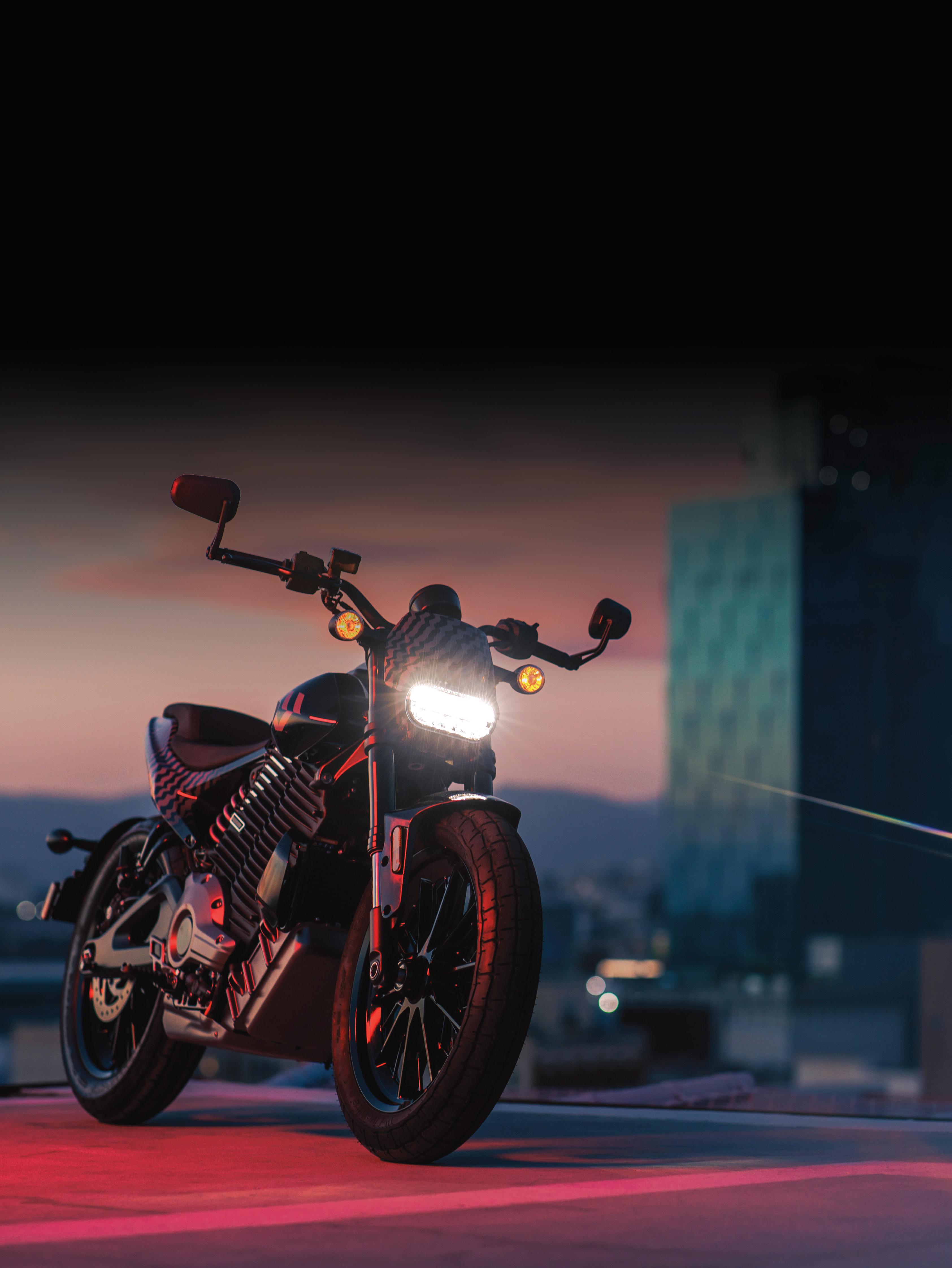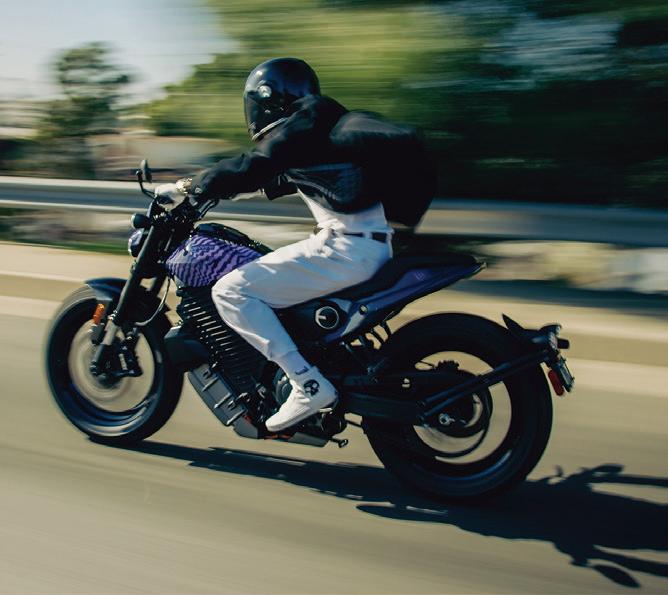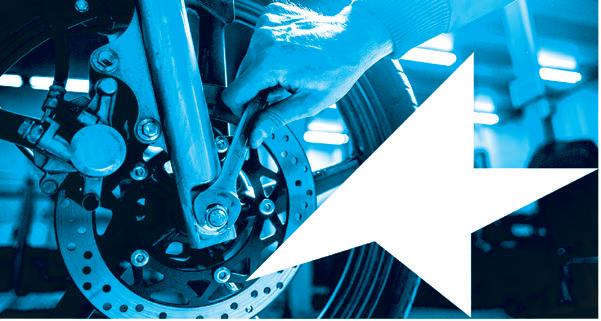
9 minute read
AMA GARAGE
Tips,Tweaks, Fixes and Facts: The two-wheeled ownership experience, explained
STREET SAVVY
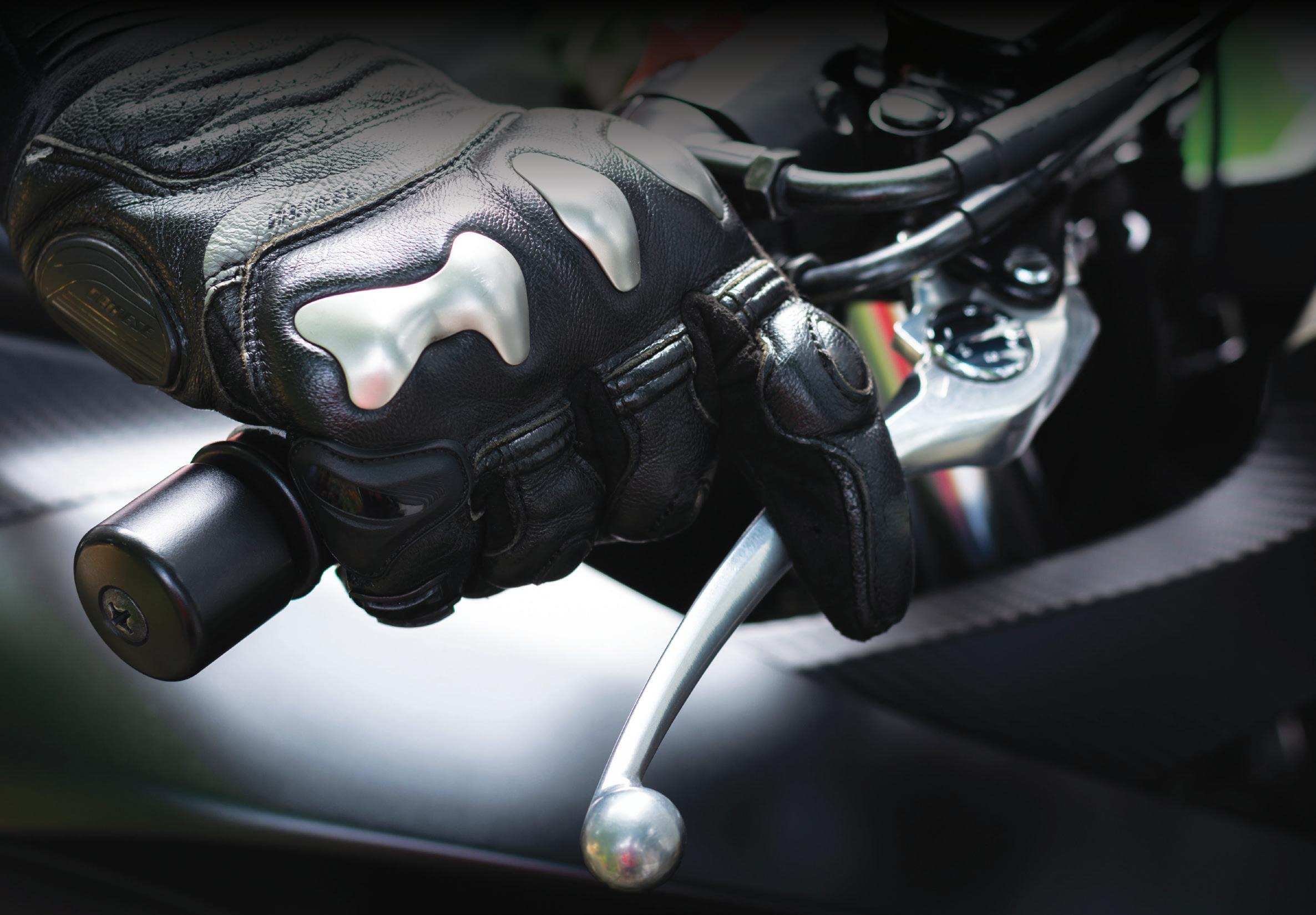
Cover Me!
There’s analytical debate about whether or not to cover your brake lever, but experience makes the case
BY MITCH BOEHM
Like a lot of (probably) older motorcyclists, I learned to ride exclusively by experience, and all the bumps, bruises, close calls and actual falls that come with that, and I’ll happily admit to never having taken a rider skills course.
Of course, having ridden for 50 years, raced motocross for 47 of them, road raced for 37, ridden on the street for 40, having taught road racing skills and strategy in the classroom and on the track, and having written a lot about riding technique over the decades, I’m thinking there’s not much I haven’t yet encountered.
Commuting for 30-plus years and hundreds of thousands of miles in the loveliness that is Los Angeles traffic taught me a lot of useful things over the years, and one of the most vital was covering the front brake lever to varying degrees depending on the particular traffic situation.
It’s a tactic that comes in handy on backroad rides and on the racetrack, as well, but for this discussion I want to stick to street riding and the many benefits covering the brake offers.
Of course, not everyone agrees, including a lot of instructors that work for various riding-skills entities out there. Boiled down, their argument is basically that, for newer riders, especially, covering the brake lever to reduce reaction time in an emergency or brake-now situation can get in the way of separate and proper braking and throttle-application techniques, and for new riders just learning the basics I can see some logic here. You want to become proficient at throttle and braking separately before you start mixing them, as covering the brake (and working the throttle at the same time) entails.
But then you read something like this on an online forum, and you wonder…as I did. • I took the MSF Experienced Rider Course yesterday (excellent refresher course, BTW), and the instructor noticed that I used two fingers to cover the brake at all times. She asked me where I learned that technique, and I told her that I learned it from talking to experienced riders, reading about it in various books (such as Reg Pridmore’s “Smooth Riding”) and from firsthand experience. I ride in a
city (Chicago), so I am dealing with rapidly changing traffic conditions — and a corresponding increase in risk factors — most of the time. It only makes sense for me to cover the brake lever in order to reduce reaction time, and I only cover with two fingers because my Brembos are pretty damn powerful. I always use a progressive pull on the lever, and never just “grab” it.
Anyway, she looked at me like I answered in pig Latin and told me that it was “better” to use all four fingers to progressively brake for a firmer, stronger stop. I was told to keep all four fingers on the throttle, and when I wanted to brake to remove all four fingers from the throttle and use them to progressively brake. I did that for the rest of the class, but honestly, it felt counter-intuitive to my experience out on the streets as a competent and accident-free rider (so far, knock on wood). So…am I wrong to cover my brake lever with two fingers?
In a word, no.
Since my college days I’ve always harbored some doubt about what is being taught in the classroom and if it meshes with actual real-world experience and measurable performance, and I find myself thinking of those doubts in this particular instance.
I’m not saying this instructor is wrong to teach total brake and throttle separation to intermediateand-above riders, as that technique works adequately. Just that, she most likely isn’t aware of the larger picture, and doesn’t have the meanstreets experience that riders like yours truly have — experience that has proven again and again that covering the brake properly can save your bacon and help keep you out of harm’s way.
Interestingly, a handful of savvy forum responses echoed my take on all this: • Know your bike! Newer bikes have crisp and powerful braking systems, and two fingers is often all you need, so the three- or four-finger approach taught by many schools is outdated, as is the all-fingers-or-nothing method. Do what is comfortable and what works for you. • There is no One True Way to do this! Auto and truck drivers rarely notice when you decelerate, so
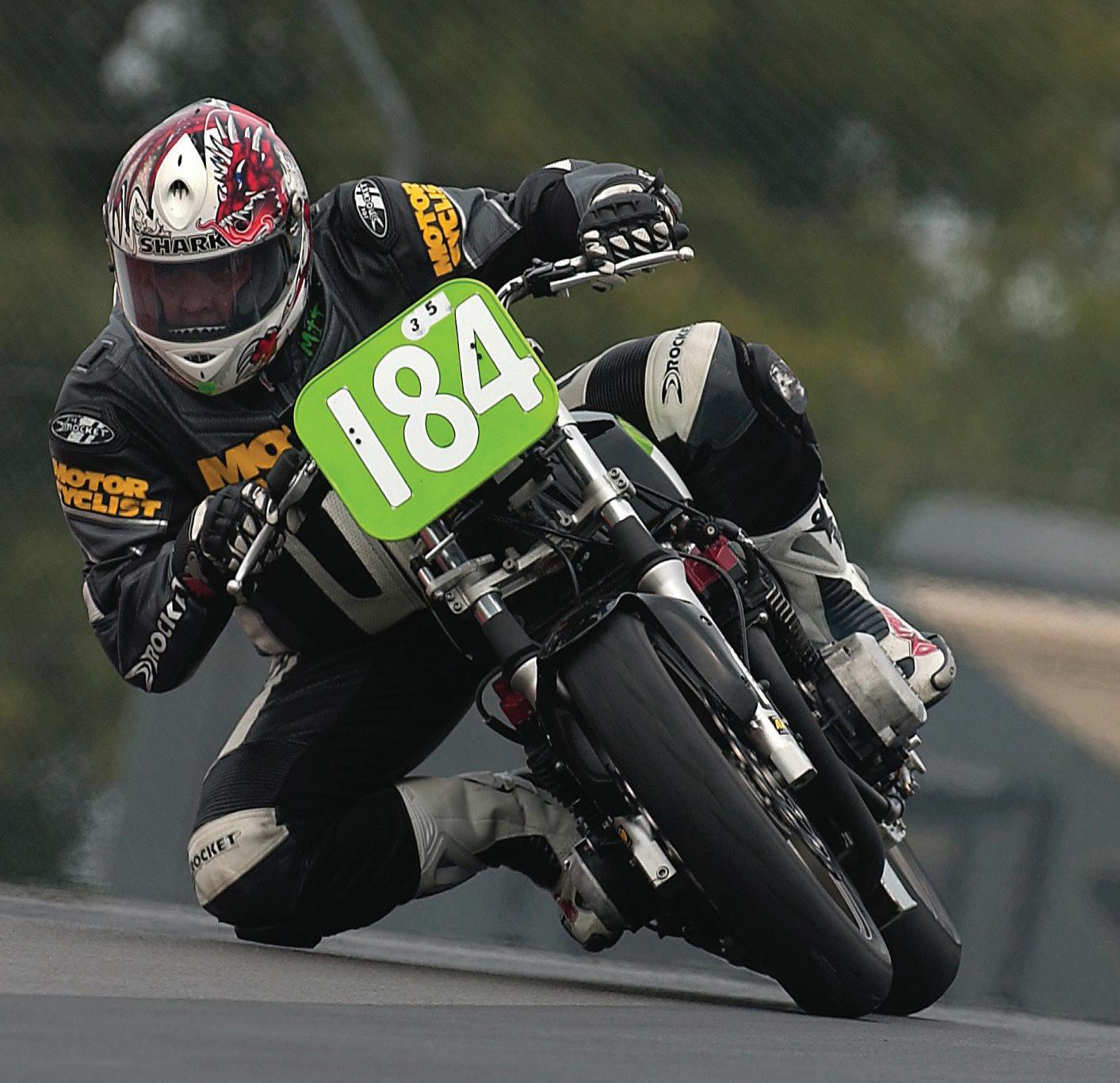
covering the brake with a finger or two and using it to flash your brake light is a way to keep them honest and aware back there. • I took the ERC course, too, and that four-finger stuff was the only part I really disagreed with. Modern brakes are firm and don’t fade (in typical use), so there isn’t a problem with fingers being trapped beneath the lever. Plus the increased reaction time to get to the lever is that many more feet of travel before you stop. Two fingers, all the time, even on the freeway. • Way back, when bike brakes weren’t so good, any fingers under the lever could interfere with lever travel. My guess is, since some of these older bikes are still around, the MSF discourages what most of us do on our bikes, even though it’s not applicable in many instances. Again, I get the idea of teaching braking and throttle separately to beginners and maybe re-entry riders, and not clouding the issue with a method that involves doing two things at once. As an O- and D-line high school football coach I taught our freshman players the basics of blocking first, and only later, once they’d gotten the hang of them, did we show them the more advanced footwork and
I’ve covered the brake technique stuff. lever as long as I can Back in 1984, AMA remember, on the street Hall of Famer Harry H. and on the racetrack, Hurt, David Thom and and I’m not even aware of it. Call P.A. Hancock of the Head it muscle Protection Research Lab at memory. the University of Southern California (USC) wrote a research paper on the effect of hand position on motorcycle brake response time. In it, the primary authors of the legendary BRIAN J. NELSON Hurt Report concluded that training and practice in the effective use of the front brake and covering the brake lever [my emphasis] has “the potential to increase the number of motorcyclists who successfully avoid a critical violation of their right of way.” Based on that research, and on my decades of experience on city streets, freeways, backroads and at the racetrack (where trail-braking and subtle, mid-corner corrections can be made with the brake), I’m very definitely a cover-the-brake kinda guy. So try it. Practice it. See what feels comfortable. And if it works for you, great. If not, the all-or-nothing approach taught by many will suffice. Just be aware that the extra halfsecond it takes you to get those four fingers from the grip to the lever might be the difference between getting stopped and…well, not stopping in time. Good luck out there!
Garage
Jennifer Williams shown at one of her Wind & Throttle pop-up stores. Bottom right: Stellar Moto Brand founder Jenna Stellar.

Women’s Gear, On The Gas
More women riders have resulted in more ladies’-gear choices
BY JOY BURGESS
One of the biggest complaints I hear from lady riders is that it’s tough to find good gear that fits. Not only have offerings traditionally been limited, women struggle with limited sizes and cuts that just don’t fit their body types.
But that’s changing, especially as more women join the ridership ranks and more ladies launch female-focused gear companies. The benefits of these for-women-bywomen companies are that they have a greater understanding that women come in all shapes and sizes, and that many want quality gear that actually looks good.
One such entrepreneur is Jenna Stellar, a former Hollywood costume designer who runs Stellar Moto Brand (StellarMotoBrand.com). She grew up around motorcycles and always dreamed of applying her designer skills to moto gear. But it was crashing without the right gear and being injured that resulted in her career move. “No one should have to suffer through an experience like mine,” Stellar says, adding that she was angry she let vanity get in the way of safety.
Stellar’s gear offers sizes ranging from XXS to 3X and uses a synthetic fiber called Dyneema that’s super-strong and offers some of the best protective technology available. Her gear is armored, too. “Companies often cheap out by not giving us armor with products. While my gear may be a little more expensive, an ambulance ride is really expensive!”
Another woman-owned gear company is Jennifer Williams’ Wind & Throttle (WindandThrottle.com), an outfit born out of her frustration with searching for functional, comfortable gear.
“I’d have to sift through tons of men’s gear just to find a few options,” she told us, adding that it drove her to create her business, which includes a curated selection of gear specifically designed for women.
“My favorite part is working with women to help them find the right gear,” Williams said, and I can personally attest to that. When I was looking for gear and having a tough

time because I’m vertically challenged, she asked for my measurements and helped me find some great options.
The good news is that finding great ladies’ gear is no longer a scavenger hunt…if you know where to look, that is.
Electric Future In Focus
LiveWire/Harley-Davidson’s new Del Mar e-bike fills a prime mid-price category slot
BY KALI KOTOSKI
The recent parade of electric motorcycle offerings from brands like Zero, Energica, Damon, and even recent rumblings that Can-Am’s debuting an electric motorcycle soon, make it clear: electrification is coming.
Harley-Davidson first went electric in 2019 with the debut of the LiveWire, and now Harley’s electric motorcycle subsidiary LiveWire has unveiled the second horse in its “charged” stable, the splashy and tastefully futuristic flat-track-inspired Del Mar.
The all-electric bike was designed with zippy urban commuters in mind, and the first 100 launch-edition units have already sold out at a retail price of $17,699, though they won’t be delivered ’til Spring 2023. Immediately after, LiveWire will focus on producing the standard S2 Del Mar with a target price of $15,000.
Specs haven’t been finalized, but the Del Mar has a target output of 80 horsepower, weighs under 440 pounds and delivers an expected 0-to-60 in 3.5 second or less, with a city range of 100 miles per charge.
Utilizing LiveWire’s scalable ARROW architecture that debuted in the Del Mar, the design is meant to be highly modular, with proprietary battery, electric motor, charging and control systems.
“The ARROW architecture underpinning the Del Mar, developed inhouse at LiveWire Labs, demonstrates our ambition to lead in the EV space and establish LiveWire as the most desirable electric motorcycle brand in the world,” said Jochen Zeitz, Chairman, President and CEO of Harley-Davidson, in a news release.
Many longtime enthusiasts are understandably lukewarm on the whole e-bike concept, and the genre does have its limitations in terms of range and higher prices — as all e-bikes do. But once you ride one and discover how seriously interesting and different they are from what you’re used to, you may become a fan after all. It’s definitely going to be interesting.
